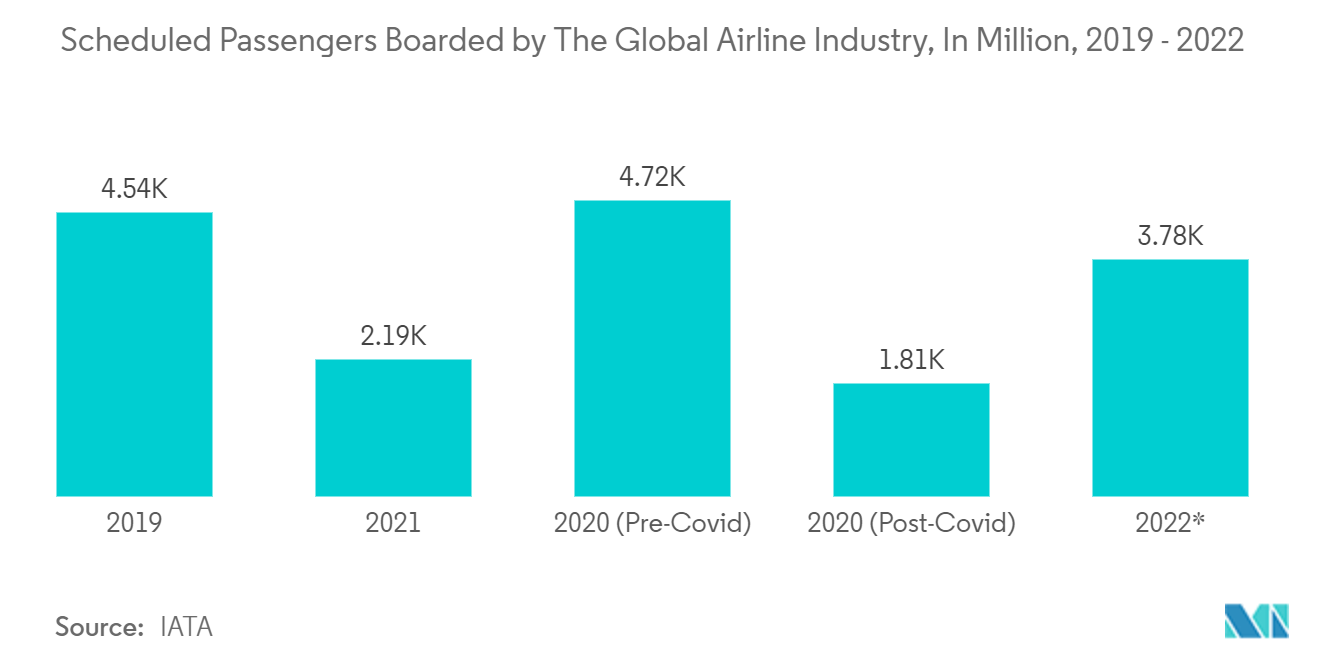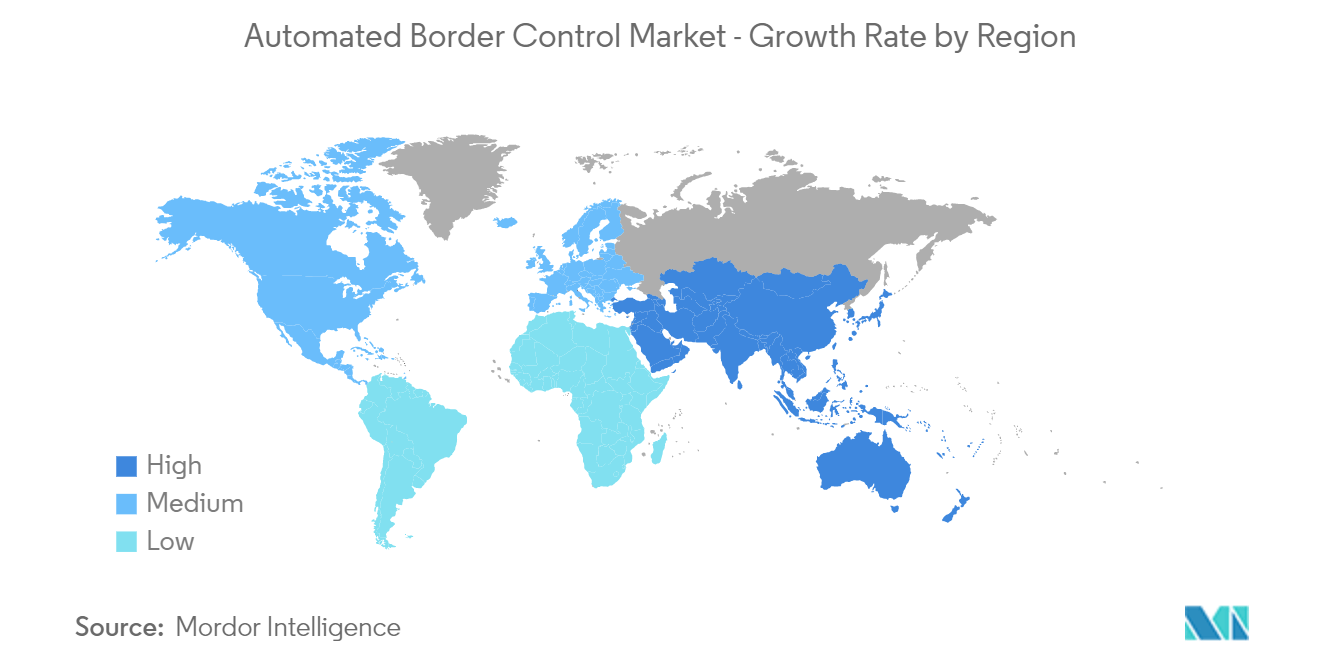Market Trends of Automated Border Control Industry
This section covers the major market trends shaping the Automated Border Control Market according to our research experts:
Airport Applications are Expected to Witness a Rapid Growth
- The aviation industry is anticipated to hold a significant market share. It will continue its position during the forecast period, primarily due to the substantial rise in airports and the exponential increase in air passenger traffic. The increasing threat of terrorist attacks and the security standards set by the international authorities, including IATA, ICAO, and ACI, are among the two most influential drivers sustaining the market studied.
- Airlines can handle a considerable number of people at once due to the growth in aircraft transportation and passenger numbers. The increase in air travel is brought on by factors including an increase in the number of people traveling abroad for higher education and career opportunities, a decrease in air travel costs, a change in how people move about, and an increase in the wealth of HNWIs (high-net-worth individuals).
- For instance, in March 2022, The International Air Transport Association (IATA) anticipates that there will be 4.0 billion travelers worldwide in 2024. Furthermore, International passenger numbers in 2021 were 27% of 2019. This figure is expected to rise to 69% by 2022, 82% by 2023, 92% by 2024, and 101% by 2025.
- In the United States, an Automated Passport Control (APC) program was introduced to expedite the Canadians'Canadians' entry process, US passengers, and the passengers eligible for Visa Waiver Program, by providing an automated process through CBP'sCBP's Primary Inspection area. Such initiatives by the government are estimated to drive the market studied.
- Longer check-in times generate overcrowding, causing travelers to spend significant time standing in lines. To prevent such bottlenecks, e-gate technologies are utilized. The need to transport people efficiently via airport checkpoints and the growth in security concerns necessitates the development of innovative technical solutions. For instance, In June 2022, the Bangladesh government opened 12 e-gates at Dhaka International Airport. Passengers possessing e-passports may now utilize e-gates at Hazrat Shahjalal International Airport to accomplish their immigration quickly. Under the "E-Passport and Automated Border Control Management Project," the government intends to install 50 e-gates at significant airports and land ports around the country.

Europe is Expected to Hold the Largest Market Share
- Across Europe, border agencies, governments, and industry decision-makers have faced a significant challenge: to majorly evolve and innovate their border management amid the increasing passenger traffic and changing government regulations.
- According to the Airports Council International Europe (ACI Europe), passenger counts at airports throughout the continent increased by 247% year on year in H1 2022, totaling 660 million passengers. The rise was primarily attributable to an increase in overseas traffic of 381.2%, while local traffic climbed by 88.5%. With the predicted number of international travelers, new technologies are being deployed or linked with current systems to improve border security.
- In July 2022, The U.K. government released its "New Plan for Immigration: Legal Migration and Border Control," which outlines initiatives the administration will undertake over the next five years to enhance the end-to-end user experience of persons passing the U.K. border. The policy strongly emphasizes digitalization and automating immigration and border systems, increasing security and establishing the U.K. as a global leader in legal migration.
- According to FRONTEX, in October 2022, roughly 228,240 irregular entrances were identified at the European Union's outer borders during the first nine months of this year. This reflects a 70% increase over the same timeframe last year and is the biggest total for the initial three-quarters of the period since 2016. Thus, increasing irregular entrances across the border will increase the demand for border security, contributing the market growth.
- Furthermore, increasing government funding in technology innovation for border security is expected to drive market growth. For instance, in May 2022, according to State Watch, the E.U. invested GBP 341 million (~USD 413.4 million) in studies into artificial intelligence innovations for immigration, asylum, and border control objectives since 2007.


